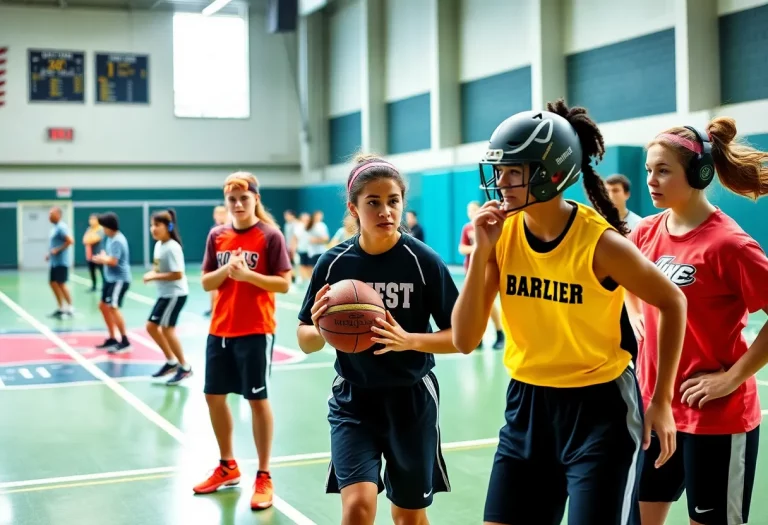News Summary
Recent NCAA settlement changes are reshaping the recruiting landscape for high school athletes. With significant funding allocated for college athletes, fewer opportunities may exist for new recruits, leading to the need for strategic decisions. The focus is shifting towards transfers and competition at lower divisions, prompting a quicker commitment process for high school talents. As the college athletic scene evolves, young athletes must adapt their strategies considering both financial aspects and developmental potential.
Philadelphia Adjusts to New NCAA Settlement Changes
Hey there, sports enthusiasts! Big changes are sweeping across the collegiate athletic landscape, and if you’re a high school athlete hoping to snag a scholarship, buckle up because it’s about to get a bit tricky out there. The recent NCAA settlement has brought with it a new set of rules that could reshape the way future athletes are recruited, particularly at the high school level.
High School Talents Face New Decisions
Let’s take a moment to recall the story of Dereck Lively II, a fantastic athlete from Westtown School, who made headlines by choosing to stay in high school rather than jumping straight into the cash-heavy world of Overtime Elite. He believed in his development as an athlete over the lure of immediate payment. What a decision that was! In 2023, he was drafted 12th overall by the Dallas Mavericks after a standout season at Duke. His journey highlights the tension many young athletes now face.
College Funds Start Flowing
The NCAA settlement is a game-changer, allowing colleges to dish out a whopping $20.5 million annually to athletes, along with $2.8 billion in backdated NIL payments for those who competed from 2016 to 2024. This development means that colleges will prioritize existing players through transfers instead of looking for fresh talent from high schools. Sadly, this could mean fewer opportunities for new recruits eyeing Division I schools.
Rethinking Roster Limits and Recruitment
As part of these changes, new roster limits are in effect: football teams can now have only 105 players while basketball teams are limited to 15 players. These new rules replace the previous scholarship limits, which were a bit more flexible. What does this all mean? Well, high school athletes will likely find themselves in a competitive squeeze, as many colleges look to fill their rosters primarily with transfer players. High school recruits weighing walk-on or partial scholarships may sadly need to rethink their future, as smaller programs and lower divisions become more appealing.
Rising Competition in Lower Divisions
Turning to the silver lining, this shift may just fuel a surge in competitiveness at lower football and basketball divisions. Talented high school players, once eyeing Division I spots, might now showcase their skills in mid-major conferences or even lower divisions to find better playing time and developmental opportunities. The competition will ultimately benefit all levels of college sports as the talent pool becomes deeper.
Act Fast: The Urgency to Commit
The recruitment scene is evolving at lightning speed! Talents are entering the decision-making process sooner than ever. With the increasing pace of recruitment, athletes are under pressure to make commitments quickly, lest they lose out on coveted scholarship offers. And let’s not forget about the newfound considerations for potential NIL earnings and financial opportunities. We’ve entered an age where recruits must weigh financial benefits alongside athletic fit during their college decision.
Adapting to an Evolving Landscape
Despite the excitement around the settlement, it’s crucial to note that high school athletes themselves might not see direct cash in their pockets, since many high school programs just don’t have the funds to support this model. However, the influence of transfer portals and NIL discussions won’t be lost on student athletes. Schools might see more of them shifting between institutions to find better circumstances.
Future Prospects
What’s more, coaches are likely to guide young athletes to prioritize developmental programs rather than immediate financial perks. This creates a whole new ballgame as we head into a college athletic culture that may mirror the European system, where players get to move up or down divisions based on their performance every year!
The Road Ahead
As the college athletic landscape morphs, athletes’ financial aspirations are becoming deeply intertwined with their management and decision-making processes. This isn’t just new rules but a whole new era in sports that could pose challenges and opportunities that coaches and young athletes will have to navigate together. So, if you’re a high school athlete, stay sharp, be strategic, and always keep your eyes on the prize! The world of collegiate athletics is evolving, and it’s anyone’s game!
Deeper Dive: News & Info About This Topic
LIVE BALL Resources
Texas High Schools to Introduce Digital Play Calling in Football
NCAA Swimming Recruiting for Class of 2027 Begins
Pac-12 Conference Realignment: Texas State Poised to Join as Northern Illinois Moves to Mountain West
PIAA Votes Against High School Basketball Shot Clock Implementation
College Coaches Gear Up for New Recruiting Period
Five North Carolina High School Players Invited to MLB Draft Combine
SWAC Universities Embrace NCAA Settlement, Eliminate Scholarship Caps for Student-Athletes
NCAA Division I and II Recruiting Begins for Class of 2027
Las Vegas to Introduce Lacrosse as Varsity Sport by 2026
NCAA’s $2.8 Billion Settlement Sparks Hope and Concerns Among College Athletes
Additional Resources
- SwimSwam
- Wikipedia: National Collegiate Athletic Association
- CBS Sports
- Google Search: house v NCAA settlement
- ESPN
- Google Scholar: NIL deals
- Sports Illustrated
- Encyclopedia Britannica: NCAA settlement
- Sportico
- Google News: NCAA settlement


